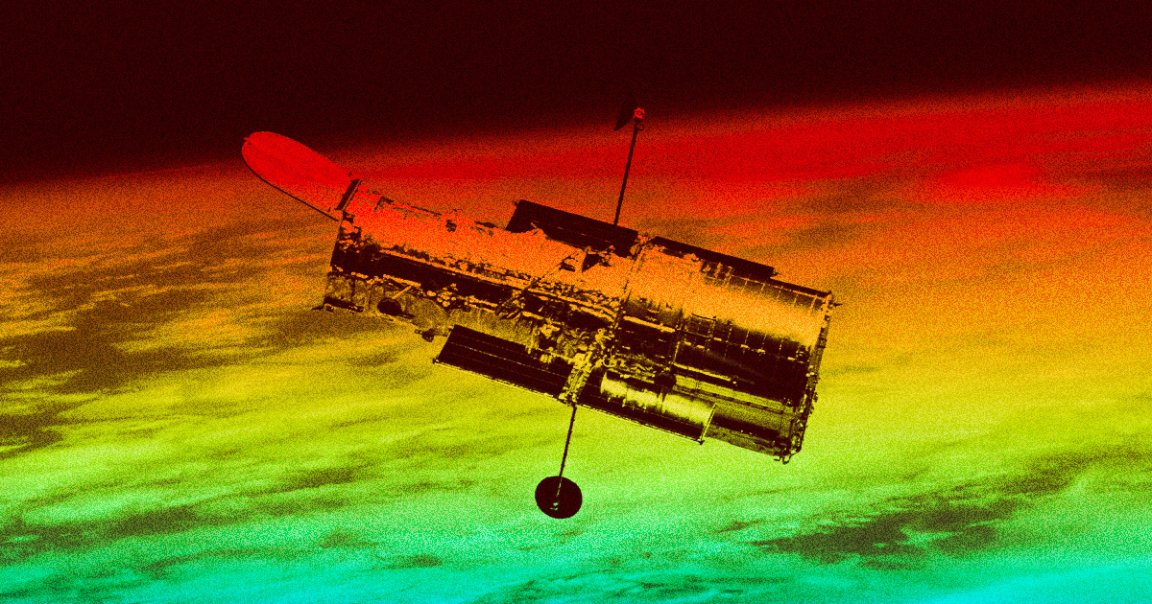
Roto Scope
NASA’s aging Hubble Space Telescope is in “safe mode” due to a recurrent technical issue that’s taken the 30-something craft offline.
In a press release, the space agency admitted that Hubble automatically entered safe mode on November 29 because one of its three gyroscopes, which determine which way the telescope points, gave faulty readings.
It was the third time the telescope had been taken offline since November 19, casting some doubt on NASA’s insistence that Hubble is otherwise “in good health.” (And to be fair, who among us is feeling unscathed by the ravages of time at that age?)
The gyroscopes in question (or “gyros,” as NASA calls them) were installed in 2009 during a Space Shuttle servicing mission, the statement explains, which saw astronauts flying the world’s first reusable spacecraft up to physically fix various issues on the telescope. It was the fifth and final of such servicing treks, and in the intervening years, only three of the six gyros installed back then remain operational — and that number may now be down to two, given the circumstances.
The Hubble team is now apparently trying to bring the faulty gyro (and the telescope at large) back online, but we haven’t heard any official updates since the announcement of the issue last week.
Sky Eye
As SpaceNews reports, this latest Hubble malfunction has led to renewed talks of a private servicing mission, which isn’t exactly a bad idea considering that it hasn’t had any manual work done on it in going on 15 years.
Indeed, after NASA posted on its official X-formerly-Twitter account about the gyro problem, Jared Isaacman, the billionaire funding SpaceX’s forthcoming Polaris private astronaut missions, responded “put us in coach.” He was referencing a 2022 feasibility study he was involved in that’s looking into whether SpaceX’s own reusable shuttle, the Crew Dragon, could be used to send astronauts up to service Hubble and “reboost” it further out into space “at no cost to the government,” an agency press release from last year reads.
The study was apparently completed earlier in 2023, but thus far, neither NASA nor SpaceX have publicly commented on its findings. In a separate response made the same day as the agency’s announcement, Isaacson plugged Polaris and referenced the feasibility study, saying that it “should be an easy risk/reward decision” without offering any further details.
While there’s little doubt that NASA will be able to fix the gyro pxroblem and bring Hubble back online, it definitely isn’t the worst idea to send up a private mission to help maintain the telescope, which for all its wonders has somewhat fallen out of the spotlight in the two years since the James Webb Space Telescope was launched.
More on NASA drama: Destroying the Space Station Will Cost NASA $1 Billion